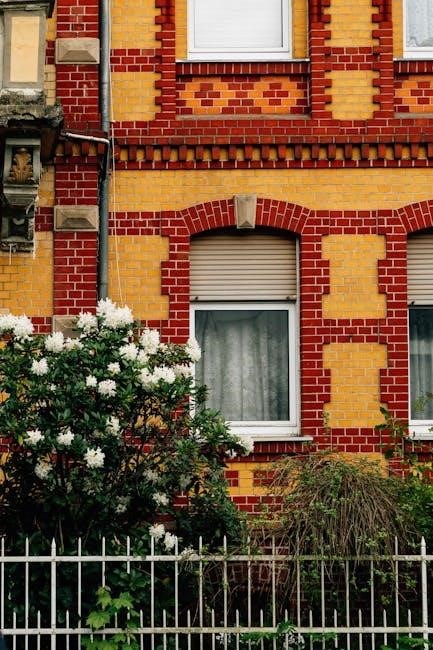Wallet Pattern PDF: A Comprehensive Guide
Embark on a creative journey with our comprehensive guide to wallet patterns in PDF format! Discover a world of designs, from minimalist cardholders to elaborate bi-fold wallets․ Get ready to craft your unique accessory․
Wallet patterns in PDF format offer a fantastic avenue for crafting personalized accessories․ These digital blueprints provide precise dimensions and instructions, catering to various skill levels․ Whether you’re a seasoned leatherworker or a beginner sewist, you’ll find patterns suitable for your expertise; PDF patterns eliminate the need for drafting, saving time and ensuring accuracy․
From simple cardholders to elaborate bi-fold and tri-fold wallets, the options are vast․ The convenience of PDF format allows for easy downloading and printing at home․ You can customize these patterns to reflect your unique style․ Explore the world of wallet patterns and create functional, stylish wallets․
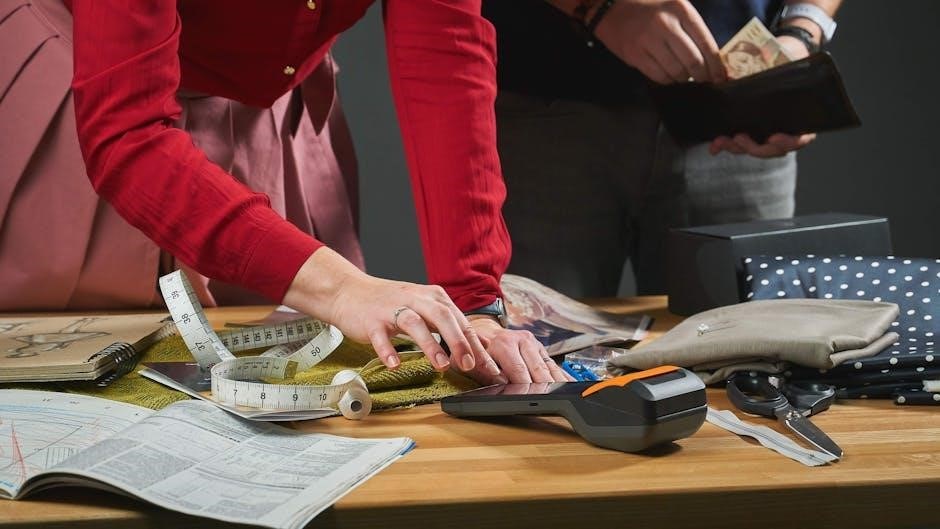
Free Wallet Pattern PDF Resources
Numerous online resources offer free wallet pattern PDFs, providing a cost-effective way to explore wallet making․ Websites dedicated to sewing, leather crafting, and DIY projects often feature downloadable patterns for various wallet styles․ These patterns range from simple cardholders to more complex designs, catering to different skill levels․
Many designers and hobbyists share their creations freely, allowing you to experiment without financial commitment․ Platforms like blogs and online communities are great for finding unique and innovative wallet patterns․ Remember to check the pattern’s license and instructions before starting your project․ Happy crafting with these free wallet pattern PDFs!
Types of Wallet Patterns Available in PDF
The world of wallet patterns in PDF format offers a diverse range of styles to suit every need and preference․ From minimalist card wallets designed for simplicity and efficiency, to bi-fold wallets providing a classic and compact design with ample storage, there’s a pattern for everyone․
Tri-fold wallets offer even more storage capacity with their multiple folds, while coin purse wallets are perfect for those who prefer to carry loose change․ Passport wallets, designed to securely hold your travel documents, combine practicality with style․ The availability of these patterns in PDF format makes them easily accessible for download and printing, allowing crafters to pursue their projects conveniently․
Simple Card Wallet PDF Patterns
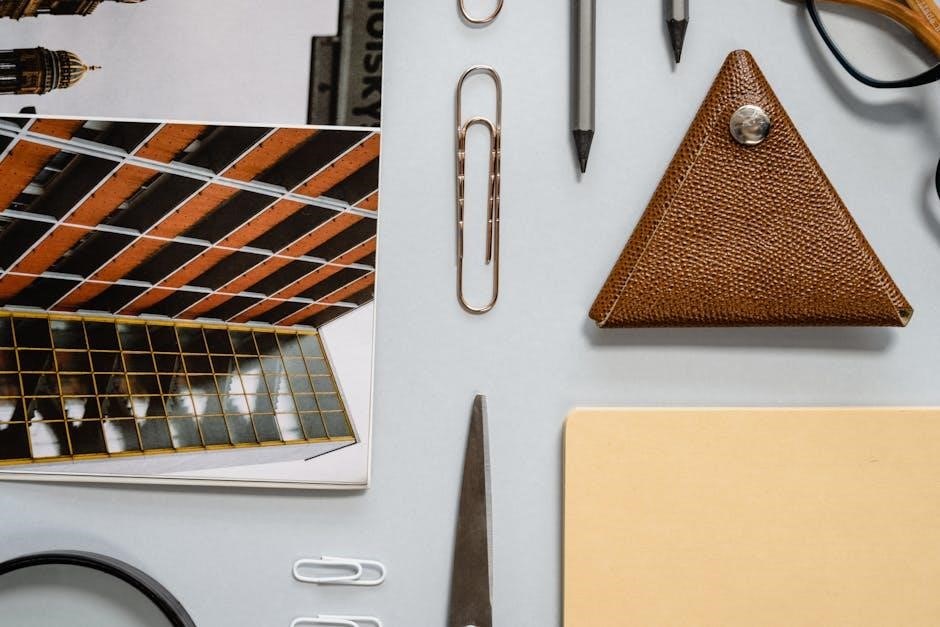
Simple card wallet PDF patterns are a fantastic choice for beginners and those seeking a minimalist design․ These patterns typically feature a streamlined construction, focusing on functionality and ease of use․ They are ideal for carrying essential cards such as credit cards, identification, and business cards, offering a sleek and compact alternative to bulky wallets․
The PDF format ensures that these patterns are easily downloadable and printable, allowing you to start your project quickly․ Many free and paid options are available online, often accompanied by step-by-step tutorials to guide you through the process․ With their straightforward design, simple card wallet PDF patterns are a great starting point for exploring the world of wallet making․
Bi-Fold Wallet PDF Patterns
Bi-fold wallet PDF patterns offer a classic and practical design for carrying cards and cash․ These patterns typically feature a central fold, creating two main compartments for organization․ One side often includes card slots, while the other is designed for bills and receipts․ Bi-fold wallets strike a balance between functionality and compactness, making them a popular choice․
The PDF format allows for easy access and printing of these patterns, with many options available for free or purchase online․ Step-by-step tutorials are often included to guide you through the construction process․ With their familiar design and ample storage space, bi-fold wallet PDF patterns are a versatile choice for everyday use․ They are suitable for both beginners and experienced crafters․
Tri-Fold Wallet PDF Patterns
Tri-fold wallet PDF patterns provide enhanced storage capacity and organization compared to bi-fold designs․ Featuring three folding sections, these wallets offer more card slots, compartments, and pockets․ This makes them ideal for individuals who carry a larger number of cards, cash, and other essential items․ Tri-fold wallets are popular for their practicality and versatility․
The PDF format allows for easy printing and assembly of these patterns․ Free and paid patterns are available online, often accompanied by detailed instructions and video tutorials․ While tri-fold wallets may be slightly bulkier than bi-fold options, their increased storage space makes them a worthwhile choice for those needing extra room․ Crafters of all skill levels can enjoy creating their own customized tri-fold wallets․
Coin Purse Wallet PDF Patterns
Coin purse wallet PDF patterns offer a convenient and stylish solution for carrying loose change, cards, and small essentials․ These patterns typically feature a compact design with a secure closure, such as a zipper, snap, or clasp, to keep your coins from spilling out․ Coin purse wallets are perfect for those who prefer a minimalist approach to carrying their belongings․
The PDF format makes it easy to download, print, and assemble these patterns at home․ Many free and paid options are available online, often including step-by-step instructions and video tutorials․ Coin purse wallets can be made from a variety of materials, including leather, fabric, and even upcycled materials․ This allows for endless customization possibilities to match your personal style and preferences․ Whether you’re a beginner or an experienced crafter, coin purse wallet PDF patterns provide a fun and rewarding project;
Passport Wallet PDF Patterns
Passport wallet PDF patterns are designed for the organized traveler, offering a secure and stylish way to carry essential documents․ These patterns typically include dedicated slots for your passport, boarding passes, credit cards, and other travel necessities․ The PDF format allows for easy downloading and printing, ensuring accurate template sizes for your project․ Many patterns also provide step-by-step instructions and visual aids to guide you through the construction process․
Crafting a passport wallet using a PDF pattern allows for customization to suit your specific needs․ You can choose your preferred materials, such as leather or fabric, and select hardware like snaps or zippers for a secure closure․ Passport wallet patterns often incorporate additional features like pen loops, SIM card pockets, or even small coin pouches․ With a variety of designs available, you can create a passport wallet that reflects your personal style and keeps your travel documents safe and organized․

Materials Needed for Wallet Making
Creating a wallet requires careful selection of materials to ensure durability, functionality, and aesthetic appeal․ The choice of materials greatly influences the final product’s overall quality and longevity․ For most wallet projects, the primary materials needed include leather or fabric for the outer shell and lining; Interfacing can be used to add structure and stability, especially when working with thinner fabrics․
Beyond the main materials, consider the necessary hardware, such as snaps, zippers, or rivets, to secure closures and add decorative elements․ Thread is essential for stitching the wallet together, and selecting a strong, durable thread that complements your chosen material is crucial․ Depending on the design, you may also need edge paint or sealant for finishing leather edges․ Finally, don’t forget essential tools like scissors, rotary cutters, rulers, and cutting mats to prepare your materials accurately․
Leather Selection for Wallet Projects
Choosing the right leather is paramount for a successful wallet project․ Vegetable-tanned leather is a popular choice due to its durability, workability, and ability to develop a beautiful patina over time․ It’s ideal for tooling, stamping, and dyeing․ For a softer feel, consider chrome-tanned leather, which is more flexible and water-resistant, but less suitable for tooling․
Leather weight, measured in ounces, is another crucial factor․ For wallets, a 2-4 ounce leather is generally recommended, providing a balance of thickness and flexibility․ Consider the grain and finish of the leather as well․ Full-grain leather retains the natural markings and character, while top-grain leather has been sanded for a more uniform appearance․ Ultimately, the best leather depends on your desired aesthetic and the wallet’s intended use․
Fabric Options for Wallet Projects
Beyond leather, various fabrics offer unique aesthetics and functionality for wallet projects․ Cotton is a versatile and affordable choice, perfect for lining or creating the entire wallet, especially when reinforced․ Quilting cotton provides a stable base for intricate designs and embellishments․ Cork fabric is an eco-friendly and stylish alternative, offering a unique texture and water resistance․
For added durability, consider using canvas or denim․ These heavier fabrics are ideal for creating rugged and long-lasting wallets․ Interfacing is essential for providing structure and stability to thinner fabrics․ Fusible interfacing can be ironed on, while sew-in interfacing offers a softer feel․ The choice of fabric depends on the desired look, feel, and durability of the finished wallet․
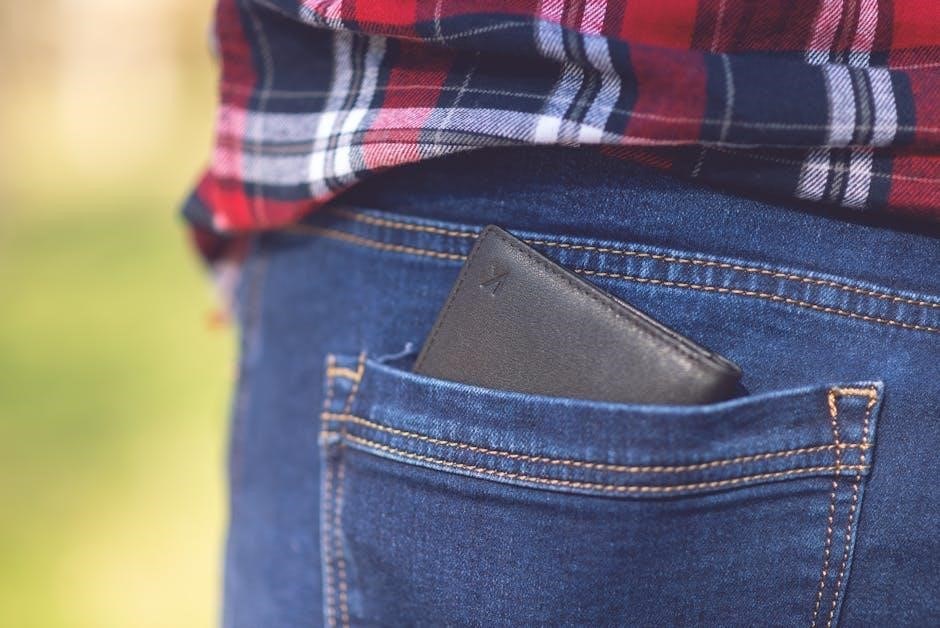
Tools and Equipment for Wallet Construction
Creating wallets requires specific tools to achieve a professional finish․ A rotary cutter and cutting mat ensure precise fabric or leather cutting․ Sharp scissors are essential for trimming threads and intricate details․ A sewing machine with a leather needle is necessary for leather projects, while a standard machine works for fabric․ Hand-sewing needles and durable thread are crucial for detailed stitching and embellishments․
A seam ripper helps correct mistakes without damaging the material․ A pressing iron ensures crisp seams and a polished look․ Clips or pins hold fabric layers together during sewing․ A ruler and measuring tape guarantee accurate measurements․ Edge paint is used for wallets created from leather for a clean, professional border․ Proper lighting is crucial for detailed work․
Downloading and Printing PDF Wallet Patterns
Downloading PDF wallet patterns is the first step in creating your handmade wallet․ Begin by finding a reputable source offering the desired pattern․ Ensure you have Adobe Acrobat Reader, or an equivalent PDF viewer, installed on your computer to open the file․ Click the download link and save the PDF to a convenient location․
Once downloaded, open the PDF and carefully review the instructions and pattern pieces․ Before printing, check the pattern for any specific printing instructions, such as scaling requirements․ Print the pattern on standard letter-size paper (8․5 x 11 inches) or A4, ensuring the printer settings are set to “actual size” or “100%” to avoid distortion․ Verify the printed dimensions using the included scale to confirm accuracy․ Assemble the pattern pieces according to the instructions, taping them together to form the complete pattern․ Now, you’re ready to start your wallet-making project!
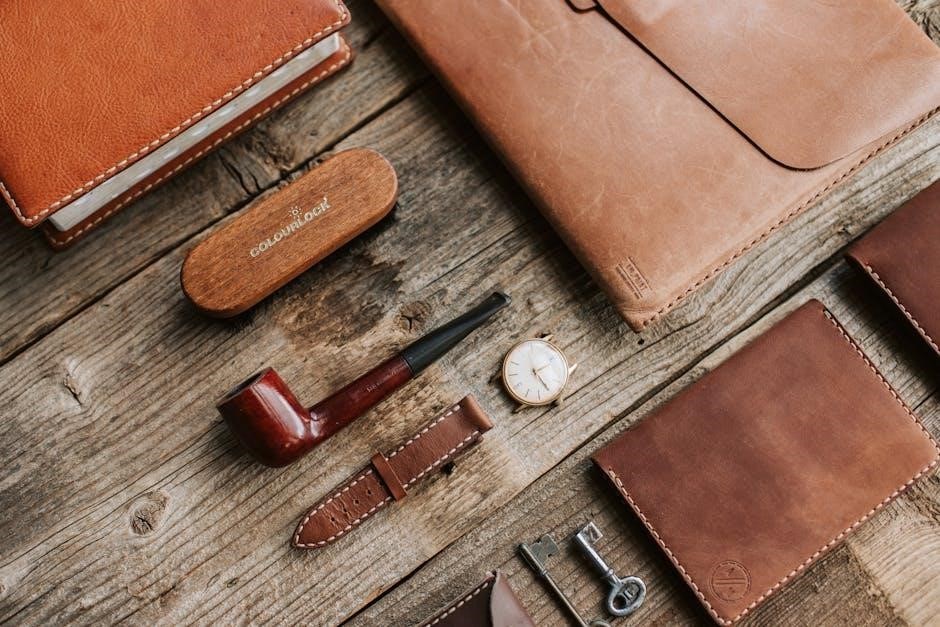
Understanding PDF Wallet Pattern Markings
PDF wallet patterns are often filled with markings that are vital for successful construction․ Understanding these markings is crucial before you begin cutting your materials․ Solid lines usually indicate the cutting lines, showing the exact shape and size of each pattern piece․ Dotted or dashed lines often represent stitching lines, indicating where you need to sew the pieces together․
Notches, usually small V-shaped or T-shaped marks, are used for alignment, helping you match corresponding pieces accurately․ Grainlines are arrows that show the direction in which the pattern piece should be aligned with the fabric grain․ Fold lines are indicated by a line with arrows pointing towards it, showing where to fold the material․ Seam allowances, the distance between the cutting line and the stitching line, are usually marked or specified in the instructions․ By carefully studying and understanding these markings, you can ensure precise cutting and accurate assembly of your wallet․
Step-by-Step Instructions for Basic Wallet Construction
Embarking on basic wallet construction begins with selecting your desired PDF pattern and printing it accurately, ensuring the scale is correct․ Next, gather your materials: leather or fabric, lining (if desired), thread, and essential tools like scissors, a rotary cutter, and a sewing machine․ Cut out all the pattern pieces carefully, following the solid cutting lines․
If your pattern includes lining, attach it to the corresponding pieces․ Begin sewing the main components together, following the stitching lines indicated on the pattern․ Pay close attention to notches and alignment marks to ensure accurate assembly․ Reinforce seams as necessary, especially in high-stress areas․ Turn the wallet right side out, if applicable, and press the seams for a clean finish․ Add any closures, like snaps or Velcro, according to the pattern instructions․ Finally, give your wallet a thorough inspection, trimming any excess threads and ensuring all seams are secure․ With these steps, you’ll have a functional and stylish handmade wallet․
Advanced Techniques for Wallet Design

Elevate your wallet-making skills with advanced techniques to create truly unique designs․ Experiment with incorporating gussets to expand the wallet’s capacity while maintaining a slim profile․ Master edge finishing techniques like burnishing leather or applying edge paint for a professional look․ Explore decorative stitching patterns to add visual interest and texture to your wallet․
Consider adding RFID-blocking materials to enhance security and protect your cards from electronic theft․ Learn to create hidden pockets or compartments for added functionality․ Embellish your wallets with personalized touches like embossing, tooling, or hand-painting․ Experiment with different closures, such as magnetic snaps, zippers, or decorative clasps․ Explore unconventional materials like cork fabric or recycled materials to create eco-friendly and stylish wallets․ By mastering these advanced techniques, you can transform basic wallet patterns into bespoke creations․
Adding Zipper Pockets to Wallets
Integrating zipper pockets into your wallet designs adds functionality and security․ Select zippers that complement your chosen material, considering both aesthetics and durability․ Carefully measure and cut the fabric or leather to accommodate the zipper, ensuring a precise fit․ Use a zipper foot on your sewing machine to achieve neat and even stitching along the zipper tape․ Reinforce the zipper attachment points with backstitching or additional stitching layers for added strength․

Consider the placement of the zipper pocket, whether it’s on the interior for coins or valuables or on the exterior for easy access․ Experiment with different zipper orientations, such as vertical or horizontal, to suit your design․ Add fabric or leather tabs to the zipper pull for a stylish and functional touch․ With careful planning and precise execution, zipper pockets can enhance the practicality and appeal of your handmade wallets․
Creating Card Slots Without Folding
Explore innovative techniques for crafting card slots in wallets without relying on traditional folding methods․ This approach offers a sleek, streamlined aesthetic and can simplify the construction process․ One method involves using separate fabric or leather pieces, layering them to create individual card pockets․ Precisely cut each piece to ensure a snug fit for the cards, preventing them from slipping out․ Secure the layers together with careful stitching, reinforcing the edges for durability․
Another technique utilizes edge stitching to create channels for the cards․ This involves stitching along the edges of the wallet panels to form raised sections, effectively creating individual card slots․ Experiment with different spacing and stitching patterns to achieve the desired look and functionality․ These methods offer a modern alternative to folded card slots, allowing for unique and personalized wallet designs․
Customizing Your Wallet Pattern
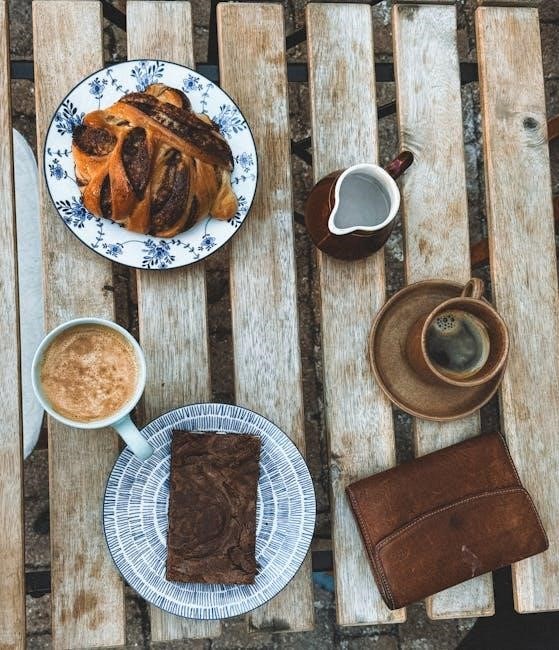
Unleash your creativity by customizing your wallet pattern to reflect your personal style and needs․ Begin by considering the size and number of card slots, coin pouches, or bill compartments you require․ Modify the pattern to accommodate these specific needs, ensuring functionality and practicality․ Experiment with different fabric or leather combinations, incorporating contrasting colors or textures to add visual interest․
Consider adding personalized embellishments such as monograms, decorative stitching, or unique hardware․ Explore various closure options, such as snaps, zippers, or magnetic clasps, to enhance both the aesthetic and security of your wallet․ By tailoring the pattern to your individual preferences, you can create a truly one-of-a-kind wallet that perfectly complements your lifestyle․ Remember to test your modifications on scrap fabric before committing to the final design․
Tips for Sewing with Leather and Fabric
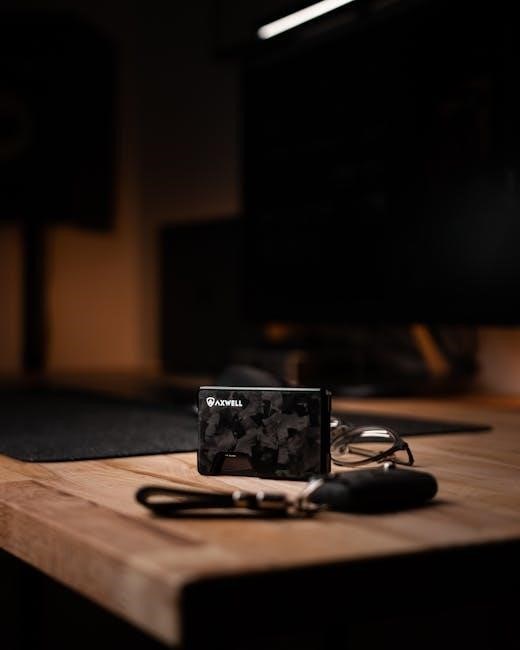
When working with leather, use a specialized leather needle and heavy-duty thread for durability․ Adjust your sewing machine’s presser foot pressure to avoid marking the leather․ Fabric projects benefit from pre-washing to prevent shrinkage․ Choose appropriate interfacing to add structure to fabric wallets․ Use clips instead of pins when working with leather to avoid permanent holes․
For clean edges, consider using edge paint or a leather burnisher․ When sewing curves, clip the seam allowance to reduce bulk․ Always test your stitch length and tension on scrap material before sewing your final project․ A walking foot can be helpful for evenly feeding multiple layers of fabric or leather․ Take your time and enjoy the process of creating your unique wallet․ Remember that practice makes perfect․
Troubleshooting Common Wallet Making Issues
Encountering issues while crafting your wallet? Uneven stitches may result from incorrect thread tension or needle size; adjust accordingly․ If your fabric or leather is puckering, reduce the presser foot pressure or use a walking foot․ Difficulty turning corners? Clip the seam allowance and use a point turner for crisp edges․
For leather projects, ensure your edges are properly skived to reduce bulk․ If your card slots are too tight, consider using a thinner material or adjusting the pattern slightly․ Zipper installation giving you trouble? Use zipper tape and a zipper foot for precise placement․ Remember, patience is key; don’t be afraid to unpick and redo sections for a flawless finish․ Consult online tutorials for visual guidance․
Congratulations on completing your handmade wallet! Take a moment to appreciate the craftsmanship and dedication you poured into this unique creation․ Your wallet isn’t just a functional item; it’s a testament to your creativity and skill․ Carry it with pride, knowing that it’s a one-of-a-kind piece made with love․
As you use your wallet, you’ll find it becomes more than just an accessory; it’s a reflection of your personal style and a conversation starter․ Share your creation with friends and family, and inspire them to explore the world of handmade crafts․ With each use, remember the joy of the making process and the satisfaction of creating something beautiful with your own hands․ Enjoy the journey and the destination․
